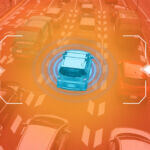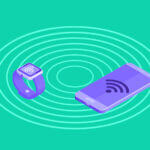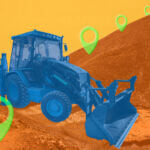
On a recent trip using my phone to navigate, my Google map was showing buildings in 3D – a wonderful tool to showcase the relative height of buildings around me and ensure that I had a better sense of where I was. This feature was introduced back in 2021, and now they are even moving into an “immersive view” with 3D. I’m old enough to remember the days of paper maps as my primary navigation tool when I had a rental car and had to write down exactly where I needed to go on a separate piece of paper so that I wouldn’t get lost when finding my way somewhere in an unknown city. But within the city itself, there were people in certain professions that I simply expected to be able to navigate their way around – including a taxi driver, a delivery person, and a first responder – all of whom were reliant on knowing and understanding geolocation to get someone or something to where it needed to go. Often, these groups of people need to not only find a building, but also a particular floor within a building. First responders, in particular, need vertical location data to enhance emergency services and public safety.
GPS & its Shortcomings
GPS is an incredible technology that was designed in the 1960s during the Cold War for military purposes. We now use it on our phones for countless applications, from ridesharing apps to delivery apps to gaming to wayfinding in a city. We are so reliant on it and the geolocation services that it provides that, in many cases, we don’t even recognize all of the shortcomings of GPS technology. For example, in urban areas, signals can bounce and be very imprecise (ever seen the really big blue dot?). Occasionally, the map might put you somewhere further away than you actually are because there is no clear line of sight to the satellites that make up the GPS signals your phone needs to receive. Maps have also historically always been 2D (including many Google and Apple maps still), but with more and more people living in urban areas (approximately 82 percent of US residents), getting the x and y coordinates alone of where someone is is not enough.
What many people don’t realize is that emergency services and public safety were the driving force behind GPS getting onto our cell phones for all of the applications we now use today. It was the proliferation of mobile phones – and the onset of people making emergency 911 calls from those phones – that was the push to get chips small enough to fit inside them. With more landlines being “cut” over the years, now more than 80 percent of emergency calls are made on cell phones. Location coordinates from GPS from phones can now provide the x and y coordinates in an emergency.
Z-Axis Vertical Location
We often think about needing to call 911 when we might have an emergency at home, but an emergency can strike anywhere, anytime. Even outside of one’s home, emergency calls are made from schools, office buildings, and hotels – multistory buildings where precise location matters, beyond the x and y, where the vertical location may be essential to saving lives. During a heart attack, an acute asthma attack, or an active shooter incident, an emergency caller is unable to provide their location or address. While our public safety answering points (PSAPs) now have technologies to generally locate the x and y coordinates of a caller and make sense of it into an actual address, if someone is in a multistory building, the vertical “floor-level” z-axis location of a caller can be a critical life-saving piece to finding a person in need.
Unfortunately, GPS coordinates and even crowdsourced WiFi are quite poor at providing the floor-level location. The FCC now has a requirement that wireless carriers now need to be providing the “floor-level” location of an emergency caller in the Top 25 major US markets, with an accuracy of at least 80 percent. This will enable our emergency operators and first responders to find emergency callers much faster – saving thousands of lives each year.
The good news is that z-axis vertical location technology exists today – and can be used in more than just the Top 25 US markets. In addition to GPS chips on phones, nearly all cell phones, wearables, and IoT devices have barometric pressure sensors. As high school physics taught us, atmospheric pressure can be measured – and changes constantly. When you go up in an elevator, the pressure goes down (and that’s why your ears might pop). And, when a rainstorm rolls through or there is even strong wind, the pressure changes then, too. But, by leveraging the pressure reading on one’s phone, and subtracting the immediate weather effects in the area, a precise floor-level location can be provided – even inside buildings.
The Importance of Precision
Digital maps replaced paper maps. As our maps start to turn 3D, and we increase our expectations for what smart buildings can do, let’s not forget the role that precise geolocation needs to play – in particular, floor-level location – in our future applications for IoT and beyond. Real-time, precise location information (including altitude) will ultimately be what makes smart buildings smart – and smart buildings can actually become participants in emergency response, helping emergency responders get to people in need faster and track the first responders as well – ensuring enhanced safety for them in complex, multistory buildings. Without precise vertical location, 3D maps are really just empty shells. Luckily, there are technologies that exist today that can bring in floor-level vertical location to make emergency services, mobile apps, and wearables using geolocation even better.




 Related Podcast Episode
Related Podcast Episode




 Related Applications
Related Applications

 Latest IoT News
Latest IoT News







